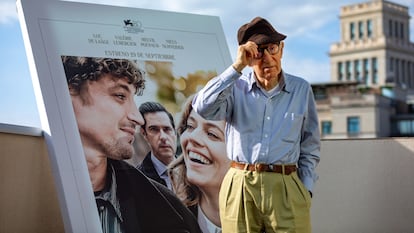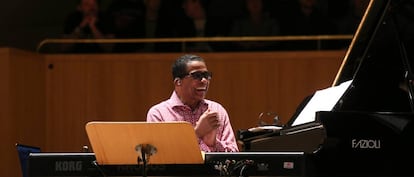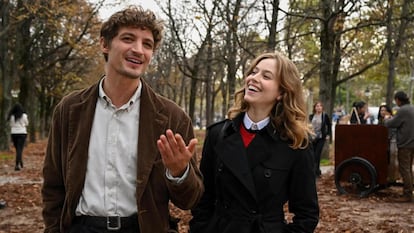
Woody Allen’s superstition and Herbie Hancock’s music
Knowing there’s a new film of his to see every year offers a certain assurance that the end is not near for our broken world
When I left the theater, I couldn’t stop thinking about the song — the hypnotic rhythm driving the plot, igniting both body and spirit, making us feel like our broken world isn’t so broken after all. I’m talking about Herbie Hancock’s Cantaloupe Island and Woody Allen’s latest film, Coup de Chance (Stroke of Luck), in which Hancock’s jazz standard takes center stage.
When the pianist composed Cantaloupe Island, many were surprised that he included such a commercially catchy melody in Empyrean Isles, one of his boldest albums. I had a similar thought while listening again to his song in Woody Allen’s movie. Why did Allen use music released in 1964? His films have always featured jazz compositions predating the 1950s bebop revolution, with classic influences like Dixieland jazz and standards from the American Great Songbook. The decision was both surprising and satisfying because Hancock’s song is a compelling blend of hard-bop and soul jazz.
Woody Allen explained in an interview that he wanted to pay homage to French films from the 1950s and 1960s, like Elevator to the Gallows by Louis Malle, and others by Claude Chabrol, Jean-Claude Luc Godard and François Truffaut that had modern jazz scores. Allen said only hard-core fans listened to that kind of jazz back then, but the French filmmakers pushed it into the mainstream.
Like I mentioned earlier, I couldn’t get the song out of my head. The 16-bar rhythm, Hancock’s piano, Ron Carter’s bass, Tony Williams’ drums, and especially Freddie Hubbard’s trumpet. It’s a thing of pure beauty in a film filled with beauty, like the performances of Lou de Laâge and Niels Schneider, and the Parisian setting. But it was the beauty of Cantaloupe Island that resonated the most with me — its infectious rhythm drives the plot and meshes seamlessly with Allen’s brilliant script.

Why couldn’t I stop thinking about the song? Maybe because I am superstitious, a bit like Woody Allen, who candidly admits to it. To wit, he always cuts a banana into seven pieces before eating it, and won’t leave his seat at the baseball stadium for a beer or hot dog if his team is winning.
Maybe I couldn’t stop humming the song because it reminded me of those moments in the movie where the main characters — old high school friends — shared simple joys like picnics in a park. The music and the film made me feel lighthearted. Life can weigh you down at times, so when something brings you cheer, you don’t want it to fade away. But eventually, it does.

Knowing there’s a new film of his to see every year offers a certain assurance that the end is not near for our broken world. Through his films, Allen inspires a more lighthearted outlook on life, challenging the notion of impending and irrevocable doom.
As I strolled through the streets after the movie, thoughts of Cantaloupe Island lingered in my mind. Not just because it showcased Herbie Hancock’s prodigious talent, but also because I pondered what I would do once I ran out of Woody Allen movies to see. The only superstition I hold dear is that I’m lucky to be an ardent cinema lover. Especially when I can share that passion with someone special who will gladly have a sandwich with me in a park.


No comments:
Post a Comment